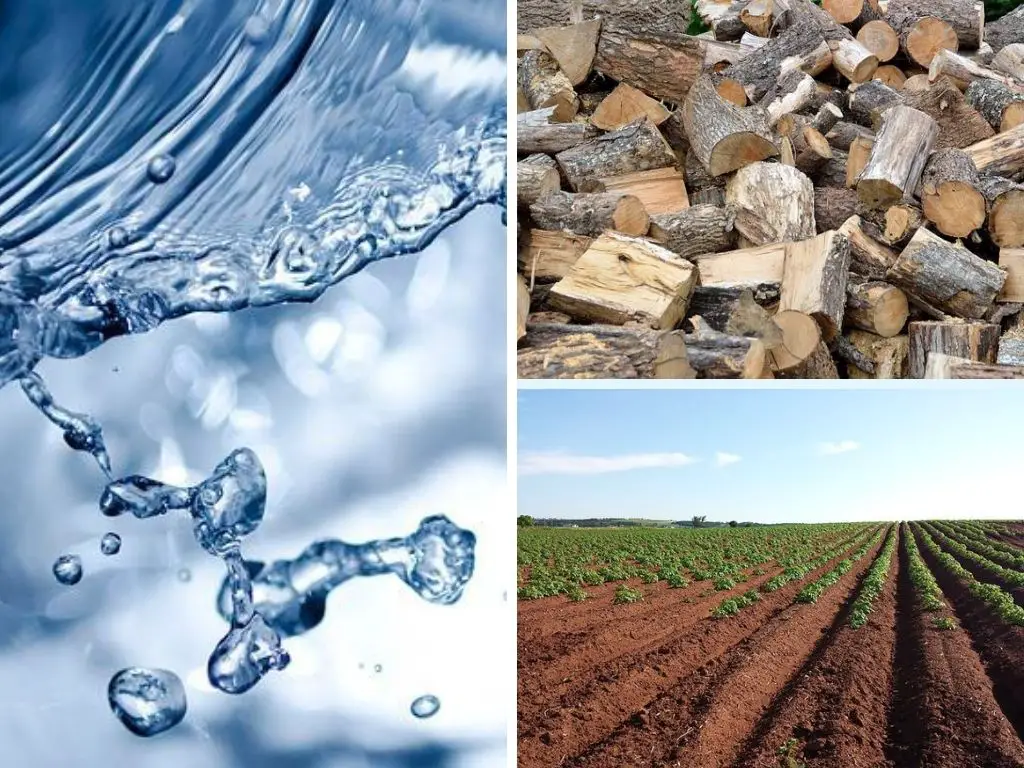In the guide below, we outline what natural resources are, the different types of natural resources, examples of individual natural resources, and other relevant information.
What Are Natural Resources? (Definition)
Natural resources are resources that come from nature/the environment, are formed by natural processes, without the involvement or modification from humans.
They are in comparison to man made resources that involve human modification and/or manufacturing.
Importance Of Natural Resources
Natural resources are extremely important to various aspects of society.
A few examples of how natural resources are important include:
– Natural resources like water are critical to human survival and health, and have key uses across society
– Natural resources form the basis or feedstock of important or commonly used man made resources
– Natural resources are used across almost every aspect and industry of society, such as energy generation, transport, construction, infrastructure, and more
– Natural resources contribute to economic production
Types Of Natural Resources
There might be several different types or categories that individual natural resources fit into.
Some of these categories might include, but aren’t limited to:
– Water
– Minerals & Ores
– Fossil Fuels (in raw form)
– Renewable Natural Energy Resources
– Wood
– Grasses & Plants
– Soil
Examples Of Natural Resources
We will give individual resources examples under each of the types/categories of natural resources listed above:
– Water
Water can include both freshwater, and also saltwater.
Fresh water is critical for drinking, washing, cleaning, economic activity and industrial processes, and a range of other uses across society.
However, it’s worth noting that more modern technologies like desalination can convert saltwater into freshwater for different uses.
– Minerals & Ores
Different minerals and ores make up some of the most important commodities on Earth.
Metal ores in particular are used to make critical refined metals like steel (which comes from iron), and also aluminum (which comes from bauxite).
– Fossil Fuels
Like minerals and ores, fossil fuels are generally extracted from the ground.
Coal, oil/petroleum and natural gas have been important natural resources for energy, and in the case of oil, for fuel, throughout modern history.
– Renewable Natural Energy Resources
Sunlight, wind, and water are a few examples of renewable natural resources that can be used for energy generation.
– Wood
Wood from trees is used for timber and other important materials.
– Grasses & Plants
An important grass is bamboo, which has a range of uses and is reportedly used in hundreds or thousands of products and services
Plants like cotton on the other hand are important for fibres that we use in textiles and other uses.
– Soil
There are different types of soil in the world.
But, arable soil and fertile topsoil is used for crop production and agriculture.
Renewable vs Non Renewable Natural Resources
We’ve put together a separate guide explaining and comparing renewable and non renewable resources.
Natural Resource Depletion, & Sustainable Natural Resource Management
We put together separate guides that outline both resource depletion, and sustainable resource management.
Both of these topics relate to natural resources.
Sources
1. Various ‘Better Meets Reality’ guides
','' ); } ?>